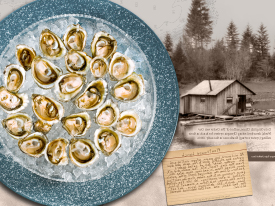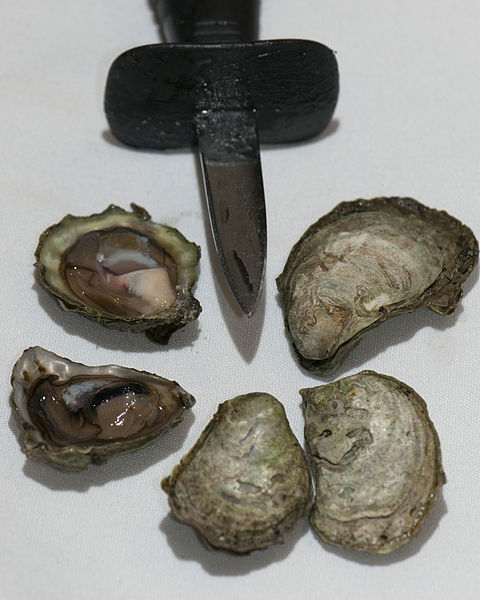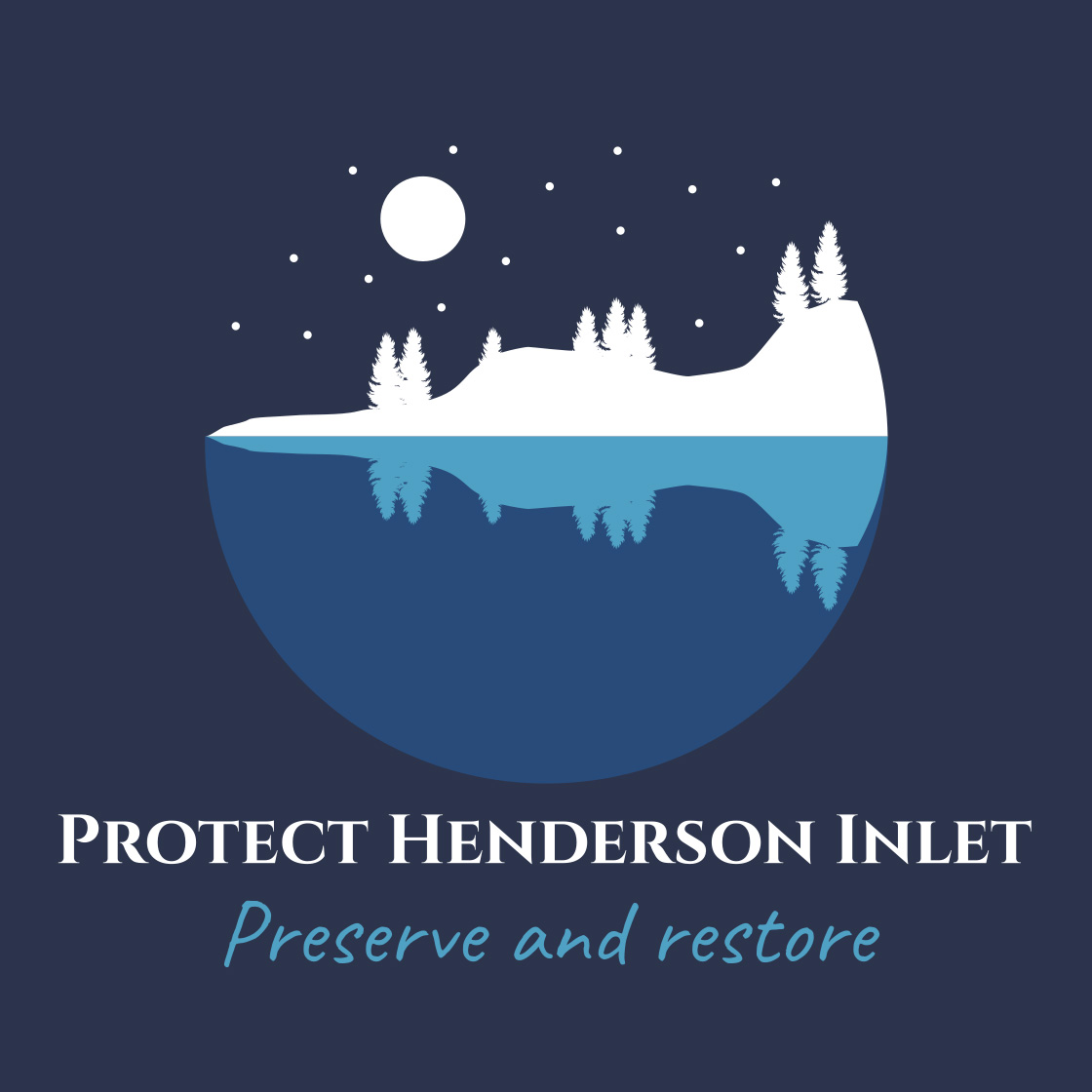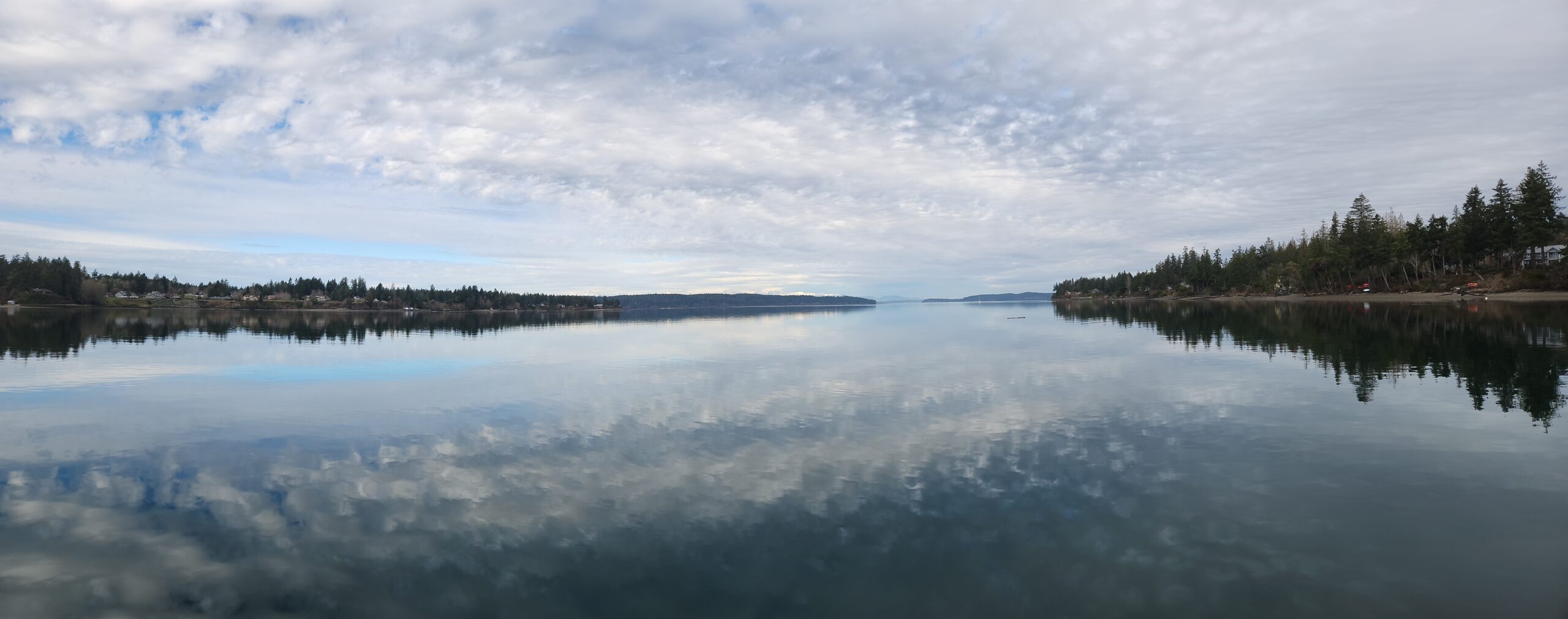History
For a diminutive species of bivalve, Olympia Oysters, often termed “Olys” have a long and fascinating history including key roles in human culture, survival, politics, and even warfare. For those whose curiosity is piqued, read the whole story here:
The Olympia is a small oyster, 6-8cm long, often described as silver-dollar sized, with a smooth, coppery taste that survives best in clean waters below the zero-tide line where it has the effect of increasing the firmness of the usually muddy substrate. It formerly provided habitat and forage for many species including young salmon.


The local indigenous peoples of Budd and Henderson Inlet who we now know as the Squaxin tribe called it “Kloch Kloch.” The oyster was once a staple of Native Americans of many tribes, and is credited with allowing the early survival of white settlers to the south portion of the Salish Sea. Extensively present on the Pacific Coast for thousands of years, the Olympia oyster got a modern name during the early days of Washington territories, perhaps when Doanes Seafood of Olympia popularized the mollusk and marketed it during the late 1800s.
Olys once covered the shores of much of the Salish Sea and Pacific Coast, early exports beginning from Willapa Bay, the over-harvesting of which led to regulations attempting to preserve sustainability. It is estimated that Olys once covered approximately 25% of Washington’s tidelands, but now is limited to about 2% of its former range. How did the loss of the Olympia come to pass? In the early boom days of oyster harvest the abundant clams were processed onshore and the unused portions of the harvest and empty shells were returned to their beaches which allowed re-population. In later years, this practice was largely abandoned which resulted in depletion of the natural substrate of the beaches.
Stocks dwindled and hard winters in the early 1900s produced further declines. Pacific Oysters were later imported from Japan to fill the gap in supply and were popular because of their larger size, becoming the mainstay of the current multimillion dollar shellfish industry. Washington State is now the world’s largest exporter of shellfish, much of it through the multinational company Taylor Shellfish, but with significant operations from other private companies and tribes including Squaxin and S’Klallum. There are many small growers throughout Puget Sound, including Henderson Inlet who grow oysters mostly for local consumption.
There are also many residents who raise Pacific oysters on their beaches for personal use. There is no significant commercial production of the Olympia oyster in Puget Sound at this time.
Current status of the Olympia oyster
The Puget Sound Restoration Fund (PSRF) has been active since 1999 in re-establishing the Olympia Oyster throughout the Salish Sea. With a goal of 100 acres by 2020, they had reached 84 acres by 2019.
There are additional efforts by the Native Olympia Oyster Collaborative (NOOC) through University of California Davis (UCDavis) extending the length of the west coast from British Columbia through Baja California.
https://olympiaoysternet.ucdavis.edu/
Efforts in the Puget Sound have been through PSRF, and the Washington Department of Fish and Wildlife is the managing authority.
The PSRF links government agencies with local community groups and commercial shellfish growers to provide the necessary organization, person-power, seed, and substrate. Oyster shell from previously harvested and processed Pacific oysters is used as a base to start local Oly seed. Since there are thought to be variations in the genetic stocks of native Olympia oysters, local stocks are likely to be more successful in restoration programs. These oyster starts are distributed on beaches historically known to have been populated by Olys. It has been observed that over time, the native oysters will self-propagate on the substrate provided.
Steps involved in the process include:
- Identify appropriate sites
- Add substrate
- Propagate and plant seed
- Observe and monitor sites
Significant successes have been seen in more Northern portions of the Sound where efforts have been concentrated, particularly Dogfish Bay.
Henderson Inlet
Protect Henderson Inlet is interested in partnering with local small growers and governmental agencies to provide volunteer support for restoration of the Olympia oyster. It was once very prominent in our area, especially in the southernmost reaches of Henderson where there are more prominent and protected tidal flats. The tidelands were reportedly covered with Olympia oysters until their depletion in the latter half of the 19th century, and could be again. These areas have had water-quality issues in more recent history due to runoff from the cities of Lacey and Olympia, and taxation of the local residents has been used to fund special oversight of septic systems of residents local to the Inlet. This program is administered through the Henderson Inlet Shellfish Protection District operated under the authority of the Thurston County Commissioners.
Henderson Shellfish Protection District meetings are held jointly with the Nisqually district by Zoom every other month, run by the Thurston County Planning Department and attended by 11 appointed stakeholders from government, tribes, the shellfish industry and interested citizens. Documents related to public meetings including schedules, agendas, and minutes are available here:
https://www.thurstoncountywa.gov/planning/Pages/nr-shellfish.aspx
PHI will be learning more about what can be done to promote restoration efforts of the Olympia oyster in Henderson Inlet and expects to communicate with citizens, educators, tribes, shellfish growers, environmental organizations, and government over this issue.
If you are interested in volunteering to help with this effort, please contact Protect Henderson Inlet.

